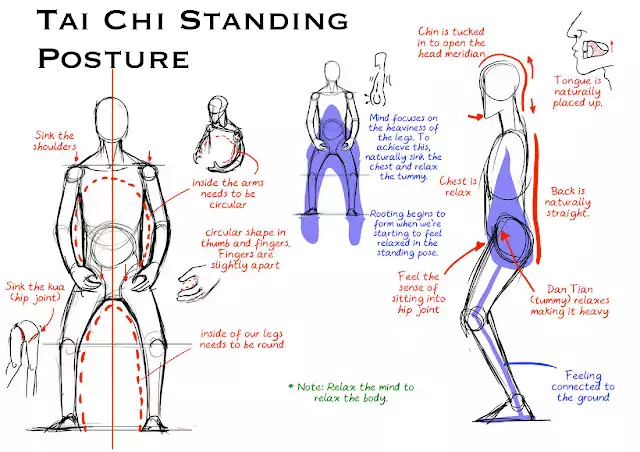Breathing is very often something that we don’t do well. The majority of us, unless we are trained musicians, singers or athletes, breathe in an inefficient way and fail to benefit fully from this most essential and natural of functions. Our habitual breathing is usually shallow “chest” breathing and employs a limited range of muscles confined to the thoracic cage, upper chest and, often as a result of tension, the muscles of the neck and upper shoulders.This can result in tension headaches and feelings of lethargy. By changing how you breath, it’s possible to change how you feel.
Ki or Chi Breathing
Ki (energy), or Chi in Chinese, is the vital energy that permeates the universe. In Asia and throughout the Indian sub-continent it has always been viewed as something that can be cultivated. Ki breathing is a form of training that was originally developed in Japan by Tempu Nakamura. Many traditional arts in Japan, including the martial arts, the tea ceremony, calligraphy, Sumo wrestling, and many others, all involve the training of the breath, or “kokyu” – breath power. The belly (“hara” in Japanese) is very important in breathing. In Japan this kind of training is colloquially referred to as “training the belly.”
Ki breathing is an exercise that is normally performed while seated in the traditional Japanese kneeling posture known as “seiza,” and this is perhaps the easiest way for beginners to develop this particular practice. It can also be practiced while standing or walking. Whether seated, standing, or in movement it is important to be relaxed. By expelling stale Ki and inhaling fresh Ki efficiently, we can invigorate both mind and body and increase the physical capacity of the respiratory function.
Posture
The practitioner should sit (a chair is fine) with the back straight, but not rigid. The shoulders should be down, and the head should rest lightly on the neck, with the chin slightly tucked in. The weight of the upper torso should be firmly anchored on top of the pelvis, and the hands resting gently on the upper thighs.
A good way to check body alignment is to let the sacrum (tail bone) arch backward slightly, and then straighten it – but not to tightly. The lower abdomen should feel full, but soft and relaxed. The more the upper body relaxes the fuller the lower abdomen will feel. Placing a firm cushion under the buttocks’ “sitting bones” will help with the proper alignment of the pelvis and abdomen.
Breathing in and Breathing Out Exercise
There are basically two stages of inspiration, and both are employed during the inspiratory phase of Ki breathing: abdominal and thoracic. Inhalation begins with inhaling through the nostrils in a slow, continuous movement, allowing the lower abdomen to inflate while keeping the thoracic cage as still as possible.
The second (thoracic) phase begins when the abdomen feels full. At this point continue to inhale by opening up the chest, allowing the upper part of the lungs to fill completely with air. After a brief pause of a few seconds holding the breath, exhalation begins.
This is achieved by constricting the epiglottis, and letting the air out through parted lips in a thin stream, with an elongated “ahh” or “haa” sound. At the end of the exhalation, when all of the breath seems to have left the lungs, by means of leaning slightly forwards the diaphragm pushes out the remainder or “reserve volume” of breath – again with an “ahh” or “haa” sound.
Remaining in this forward position, inhalation commences as in the beginning of the exercise. When the abdomen has been fully inflated one returns to an erect posture and thoracic breathing commences. This allows the external intercostals and the muscles of the neck to combine to lift the front of the thoracic cage and increase the depth of the pleural cavity, augmenting the amount of air into the lungs well above the tidal volume of normal breathing.The breath is then held for a few seconds, and released as the cycle begins again.
With practice this can develop into a flowing, rhythmical movement that can energise body and mind. To get full benefit from this exercise, ten to fifteen minutes each day should be enough.
Stress Busting
Ki breathing can help in many ways. On a physiological level it can improve the supply of oxygenated blood to the major organs of the body: the brain, heart, lungs, liver, kidneys, etc. It can improve the efficiency of elimination of waste matter and impurities from the body; and it can help maintain the effective functioning of the autonomic nervous system.
Through encouraging a calm and relaxed disposition in one’s daily life, the beleaguered sympathetic nervous system can be allowed to recover, and the natural regenerative ability of the human body can reassert itself.
